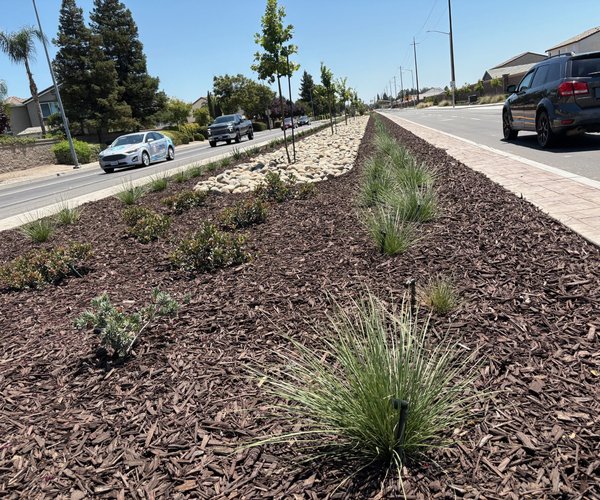Garbage in, garbage out.
That basically describes what the City of Manteca was up against when taking note of a looming state mandate to reduce the amount of garbage being buried in a landfill.
The city was also due for a reassessment of rates as operational costs were rising thanks to inflation from everything from vehicles and fuel to salaries in order to remain competitive to secure and retain solid waste workers.
Basically, the only way not to have garbage collection rates go up is to not adjust wages for inflation and to find vehicle manufacturers and suppliers willing to cut into the ability to remain economically viable by never raising prices.
And if you believe that is possible, also expect PG&E to rollback retail electricity prices to what people paid in 1960 which was roughly a tenth what households pay today based on US Bureau of Labor Statistics.
This, however, is not about PG&E’s “Operation Outer Stratosphere” or simply it’s never ending quest to make your monthly household power payment more than your rent or mortgage.
It is about how Manteca opted to get ahead of the curve to avoid a more costly piecemeal approach to the state mandate.
They also needed to address the wanton abuse of the solid waste rules.
There was a substantial number of households using recycling carts for overflow garbage.
That’s not to say there aren’t people out there acting like they are dealing with household waste like they were in the 1950s — meaning they could care less about the environment.
That when residential burn barrels — the first target of California’s early effort to clean the air — were common.
Typically, repurposed 55-gallon drums with one end cut off were used as a burn barrel.
People tossed any trash that burned into them, crumpled up a newspaper on top of it, tossed a match in, and put some type of screen on it, and let it burn.
Everything else was tossed into 33-gallon steel garbage cans likely responsible for enough injuries to give a modern-day workmen’s compensation insurance actuary the mother-of-all coronaries.
No need to sort.
No need to consciously reduce household waste.
Just burn and toss.
Whatever paper ash didn’t float through the screen would accumulate at the bottom of the barrel.
Then when the barrel started losing its structural integrity, people would load what was left of it in the back of a pickup truck and haul it to the dump.
There was no transfer station in most Central Valley cities.
The ultimate resting place didn’t have a fancy name like a landfill.
It was simply a dump.
Manteca’s last dump is beneath where the municipal golf course clubhouse is today.
It helps explain why the clubhouse appears to have been built on a semi-mound.
Unlike a landfill, dumps had a little bit more capacity.
That’s because before the state stopped the practice, anything dumped there that was burnable from yard waste to household items were separated and burned.
As an added note, the back nine holes of the golf course is where the city’s sewer plant once stood.
You could argue Manteca was an early player in the reclamation movement.
But before the days of soil remediation, worries about polluting the water table, and such, old dumps were cheap land.
Today it is a different world.
Not only would Sacramento not even allow anything remotely like a dump from the 1950s, no one wants the much better modern-day landfill anywhere near them.
It is why even if your shade of being an environmentalist is more of a faded light key lime green than a deep hunter green, you should at least understand why diversion from landfills is essential.
They are very few, if any sites, that would pass muster today for a new landfill to be created. Even if there were, it would be met with howls of protests.
It is why Bay Area garbage is trucked to the landfill on Austin Road north of Manteca.
Eventually, the Bay Area garbage — and that generated in San Joaquin County — that needs to be buried and can’t be recycled, will end up being sent far, far away.
The cost to do that is astronomical.
It is why recycling and diversion makes sense even without legitimate environmental concerns.
Next Monday, Sept. 16, is when Manteca starts its second phase of the cart switch out.
Sometime in the coming six months, my 32-gallon recycling cart will be history and I’ll have a behemoth 96-gallon cart.
Right now, it takes me upwards of eight weeks to get it almost filled. If I flattened everything, I could easily go 16 weeks without putting that size of a cart out for collection.
Given I don’t do Amazon et al, I rarely generate corrugated cardboard waste.
That said, the cardboard that’s recyclable tends to be large, such as for a replacement toilet I recently bought.
I run the risk of being placed on Greta Thunberg’s enemies of the earth list, but I lack the patience and time to use a box cutter to reduce heavy and large corrugated cardboard into pieces small enough to cram into a 32-gallon cart.
I occasionally will take it down to the city cardboard dumpster after cutting it into more manageable pieces, but my schedule doesn’t allow me to to drop by there on a weekday by 2 p.m. so, I confess perfectly recyclable cardboard goes into the 96-gallon cart the city traded out earlier this year.
The only reason I had a 64 gallon cart is I had my granddaughter’s boyfriend living with me for close to four years.
I generate in an average week just over a 32-gallon bag of waste that could easily be crushed.
I’ll clearly have capacity to accommodate any trash issues that arrive especially when the green and blue carts start being collected weekly like the brown one.
I’ll be able to reduce my garbage bill by $20 a month as I can turn back in my second green cart given one cart instead of being tipped every two weeks will be tipped weekly.
Clearly, I don’t need such large brown and blue carts although green waste is another issue.
That said, I’d much prefer a uniform collection system that helps keep costs down even if I get to deal with three large carts.
The weekly pickups and universal 96 gallon cart has built in capacity so when the city is able to again recycle more items when their current vendor contract expires, there is plenty of room to get rid of not just recyclables but organic waste and — for want of a better name — pure garbage.
That’s 198 gallons of capacity on a weekly basis per household.
Unless you have the cast of Brady Bunch and Eight is Enough all living under the same roof, there is no excuse for contaminating the recyclable cart.
This column is the opinion of editor, Dennis Wyatt, and does not necessarily represent the opinions of The Bulletin or 209 Multimedia. He can be reached at dwyatt@mantecabulletin.com






